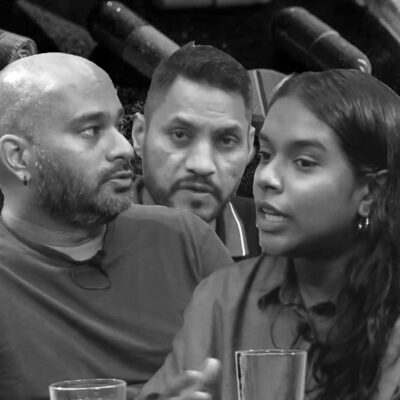Worldwide, figures indicate that drugs are gaining ground. According to the United Nations Office on Drugs and Crime (UNODC), 296 million people used drugs in 2021, an increase of 23% compared to the previous decade. The number of people suffering from drug use disorders has skyrocketed to 39.5 million, an increase of 45% in ten years. In Mauritius, the situation is unprecedented. The use of the drug has gained ground, and the rejuvenation of users has been recorded. To elaborate more on this subject, the set of Ki Nouvo Moris had as guests Kunal Naik, an addictologist, and Jamie Cartick, director of Collectif Urgence Toxida.
What is the current situation?
Jamie Cartick confides that the drug situation in Mauritius is very alarming. For a few years now, the association Collectif Urgence Toxida has recorded an increase in heroin users. There are many people who inject drugs, and they don’t understand why they don’t have the same effect as when they started using them, but especially why their bodies react differently. With the increase in the price of drugs on the market, many users feel compelled to turn to synthetic drugs.
“When they can no longer afford heroin, they use synthetic drugs, and it is more serious because synthetic drugs compared to heroin make the treatment more difficult.”
What pushes people to take drugs?
There are several reasons why a person consumes. The social environment plays a major role in a person’s life. If a person of a young age has had daily contact with drugs, it is more likely that at a certain age, this person will become a user too. The impact of poverty has become a factor in consumption. The addictologist confides that at the level of therapy, it is often the traumas, which have not been addressed and the emotions stored, that push people to use drugs because they offer them a sense of well-being. Today’s society makes people overwhelmed. Stress is generated by many things, including family problems, money worries, stigma, and discrimination. Consumption then becomes a mechanism that helps the person escape from everything that bothers him.
“Even if each person manages stress differently, the space dedicated to it is very minimal. Often, those who start using drugs want to feel normal.”
What services does CUT offer?
The Cut association offers several campaigns, one of the first of which is the ‘Esanz Sering’ program, which is a preventive campaign against HIV and Hépatite C. This campaign offers new syringes to drug users to protect them against blood-borne diseases. CUT also offers prevention and education campaigns in schools. The association also raises awareness among users about harm reduction. For instance, CUT is working hard to inform users of what they risk and how to use drug to avoid an overdose.
“Telling a user to give up drugs is not the way to protect them. CUT raises awareness and educates drug users by explaining the possible consequences of drug use but also how to protect their health.”
What about prevention?
As far as prevention is concerned, the director of CUT points out that it is complicated. Informing and raising awareness among students, for example, is very difficult because associations and activists often do not have access to public institutions. Kunal Naik stresses that prevention at the national level must start in schools from early childhood. It is imperative that drug information be integrated into the school curriculum.
« Prevention is also about mentorship and guidance, and this is what is generally lacking in the programs. »
What policy should be adopted?
The figures show that the current repressive policy is not making any progress. Although huge quantities of drugs are seized and arrests are made daily, the situation does not seem to be changing. For more than 10 years, the CUT association has set up the ‘Support Don’t Punish’ (SDP) campaign to fight against stigma and repression. Kunal Naik claims that a global community initiative campaign such as the SDP is important because it support the inclusion of harm reduction strategies and human rights protection in drug policies. Indeed, the SDP goal is to achieve policy changes that will eliminate restrictive regulations that penalize drug users.
To conclude, the battle against drugs is not a foregone conclusion. Support and guidance for drug users are essential to helping them. Helping by understanding the implications and risks of drugs is what activists advocate.
Watch the full debate:

